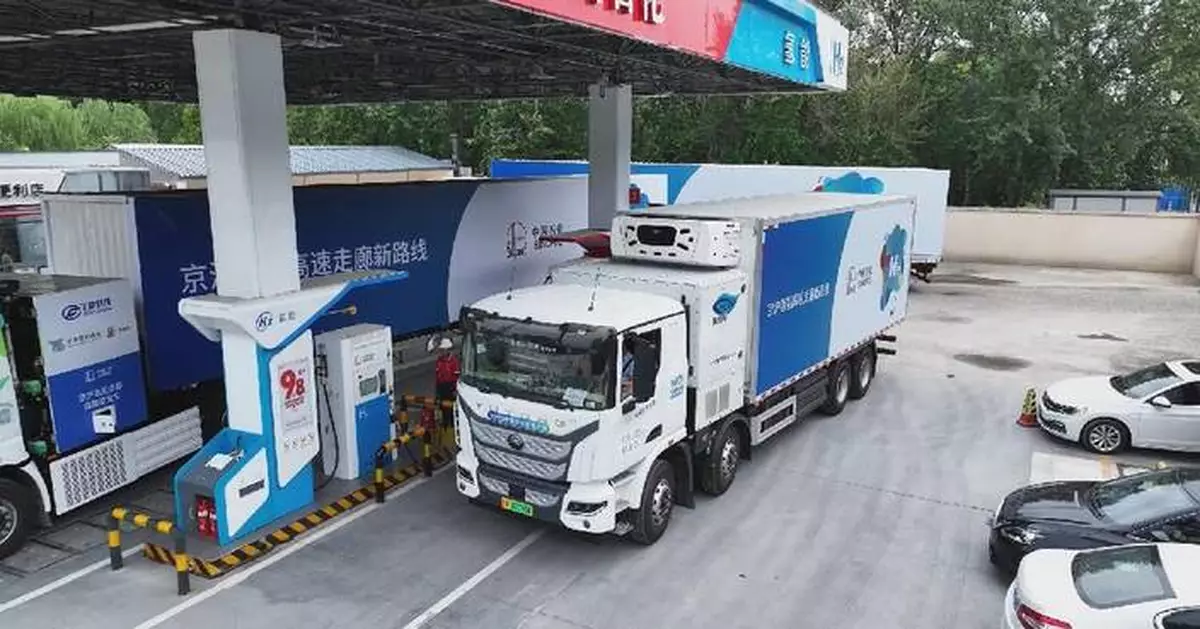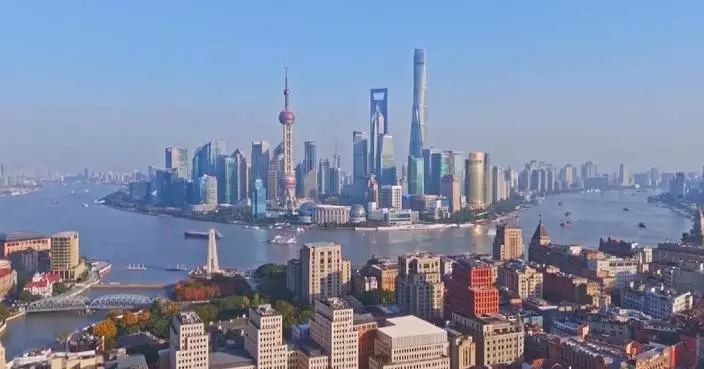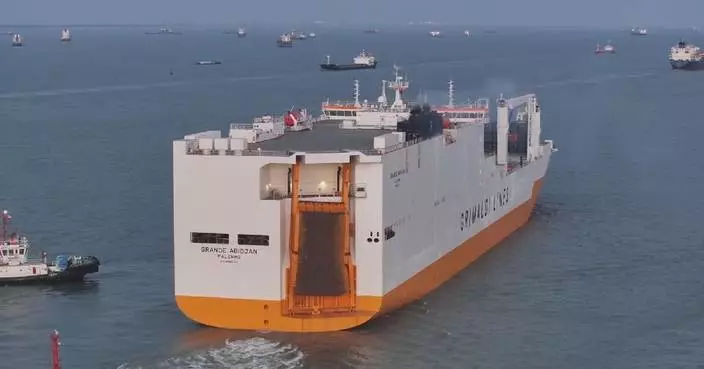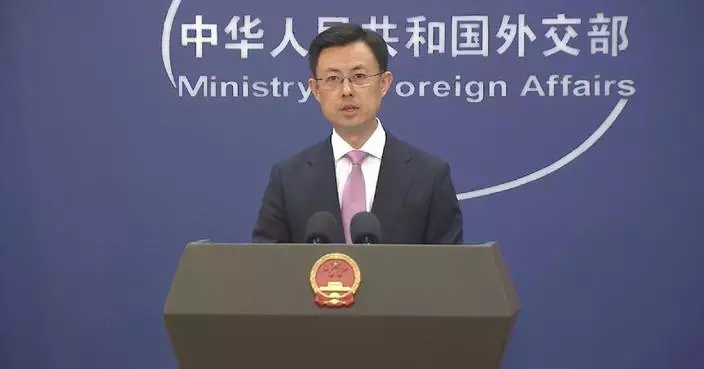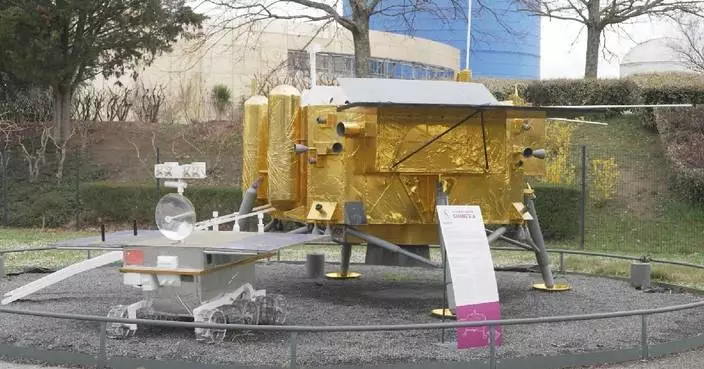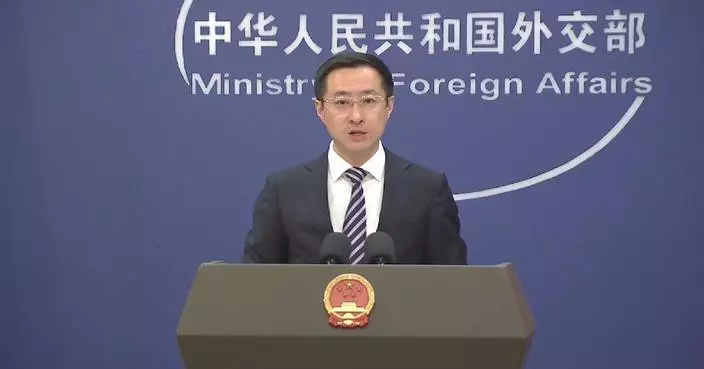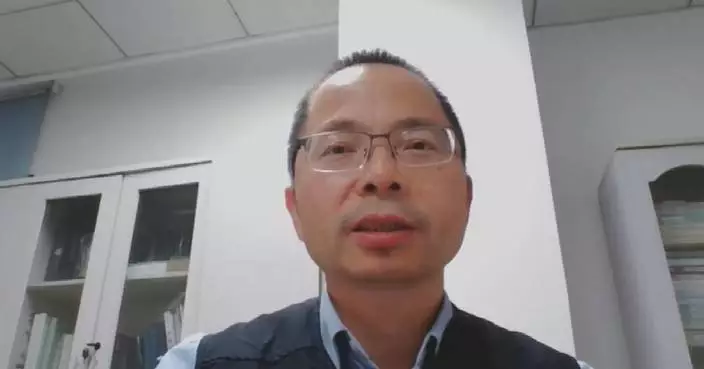China is working to advance its green transition drive by promoting trucks run on hydrogen, a convenient and clean-burning fuel.
The latest data showed that in the first seven months of this year, sales of hydrogen fuel cell vehicles reached 3,422, reflecting a year-on-year increase of 25.5 percent.
Not long ago, China has officially launched its longest hydrogen energy corridor, which stretches from Beijing to Shanghai. This corridor spans five provinces and cities, covering a total distance of over 1,200 kilometers.
Hydrogen-powered trucks are more advantageous in terms of mobility and environmental protection compared with electric vehicles and conventional gasoline powered vehicles, according to drivers.
"It takes around 10 minutes to fill up. Once fully charged, the truck's maximum driving range is about 600 to 700 kilometers," said Shang Miaolei, a truck driver.
The byproduct of emission from hydrogen-powered trucks is water vapor, which is a natural component of the atmosphere and pollutant-free.
The interior of the hydrogen-powered heavy-duty truck is similar to that of a conventional truck. However, since it does not have an internal combustion engine, the vehicle operates less noisy and emits no pollutants.
"Compared to gasoline fueled vehicles, hydrogen-powered heavy trucks are more powerful and have better stabilization system. Its driving range is also longer than electric trucks," said Shang.
A staff member from Angu hydrogen fueling station in Daxing District of Beijing introduced the process of hydrogen fueling.
"Hydrogen fueling begins by first attaching an electrostatic clamp to the vehicle to discharge any static electricity. And the operators must also release static charge from their body. Since hydrogen is a compressed gas, the fueling gun is quite heavy. This is a hydrogen detector used to monitor for any gas leaks during the fueling process. Then we just turn it on," said Wang Yi, a staff member from the station.
According to the staff member, a large truck can be filled with nearly 60 kilograms of hydrogen in about 20 minutes. The cost is around 2,000 yuan (around 282 U.S. dollars), enabling the truck to travel over 600 kilometers.
Many hydrogen-powered trucks and cold chain logistics vehicles were spotted on the corridor, with nearly 20 hydrogen fueling stations established along this route.
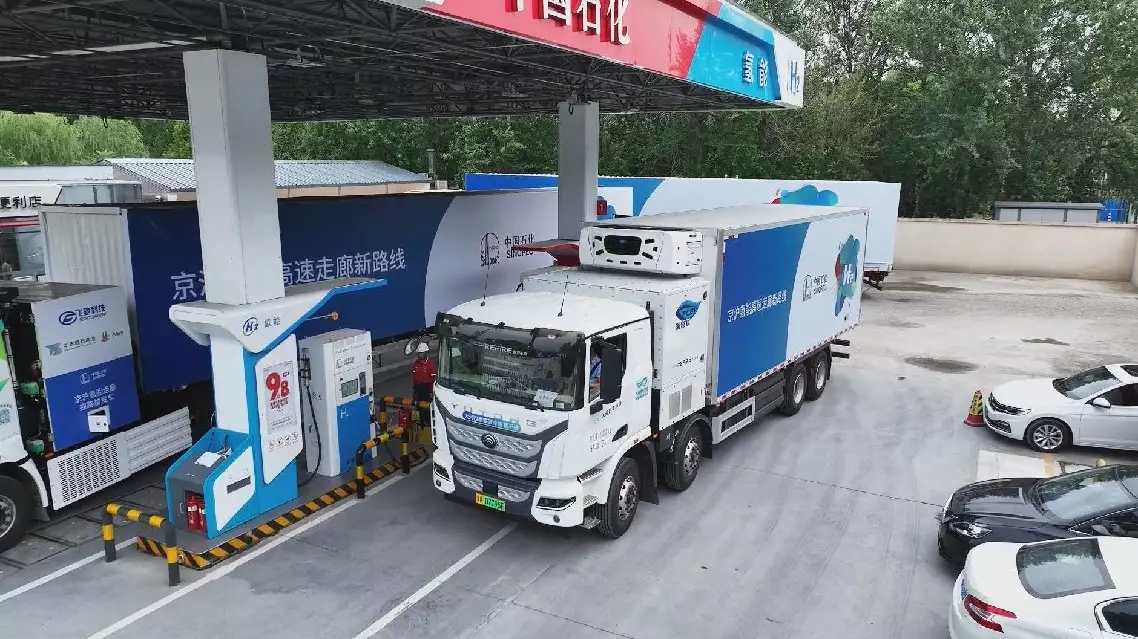
China strives to advance green transition with trucks run on green hydrogen
The United States has long been the major external factor affecting Haiti's security, stability, and development, said Geng Shuang, China's deputy permanent representative to the United Nations, on Monday, who also condemned the U.S. for exacerbating Haiti's economic challenges by imposing sweeping tariffs.
Speaking at a UN Security Council meeting, Geng expressed China's deep concern over Haiti's worsening crisis and rampant gang violence, its near-collapse state, and the desperate situation of its population.
For over a century, the United States has blatantly deployed troops, installed puppet governments, and manipulated Haiti's constitution, entrenching itself in Haiti's political affairs, said Geng.
He noted that just a year ago, the United States orchestrated the current political transition arrangements in Haiti. However, following a shift in its own government, the United States has turned a blind eye to that very transition, leaving Haiti mired in internal conflict and turmoil.
According to Geng, the United States has always been the main source of weapons for Haiti, allowing illegal weapons to flow into Haiti from Florida.
In October 2023, the United States spearheaded the formation of the Multinational Security Support Mission, pledging financial support. However, in the past year and more, its actual contributions have been relatively limited. At one point, the Untied States even attempted to convert the mission into a UN peacekeeping operation, citing a lack of funds, said Geng.
This is an apparent act to shift the burden onto the UN and its member states, treating them as little more than an ATM machine, Geng added.
Geng also highlighted the U.S. role in undermining Haiti's development.
While professing support for the Haitian people, the United States has significantly cut foreign aid and continued deporting Haitian immigrants on the pretext of national priorities when Haiti is in dire need of support, said the Chinese envoy. "What is even more shocking is that not long ago, while the United States defied world opinion by imposing sweeping tariffs on all trade partners, it also extended its so-called baseline tariff of 10 percent to Haiti, one of the world's least developed countries as defined by the UN. This act of unilateralism, protectionism, and economic bullying is not just aimed at the so-called competitors like China. It has also inflicted damage on a nation teetering on the edge of collapse, such as a fragile country like Haiti, where the people are in dire straits. This is not only cruel and absurd, but also profoundly heartbreaking," said Geng.
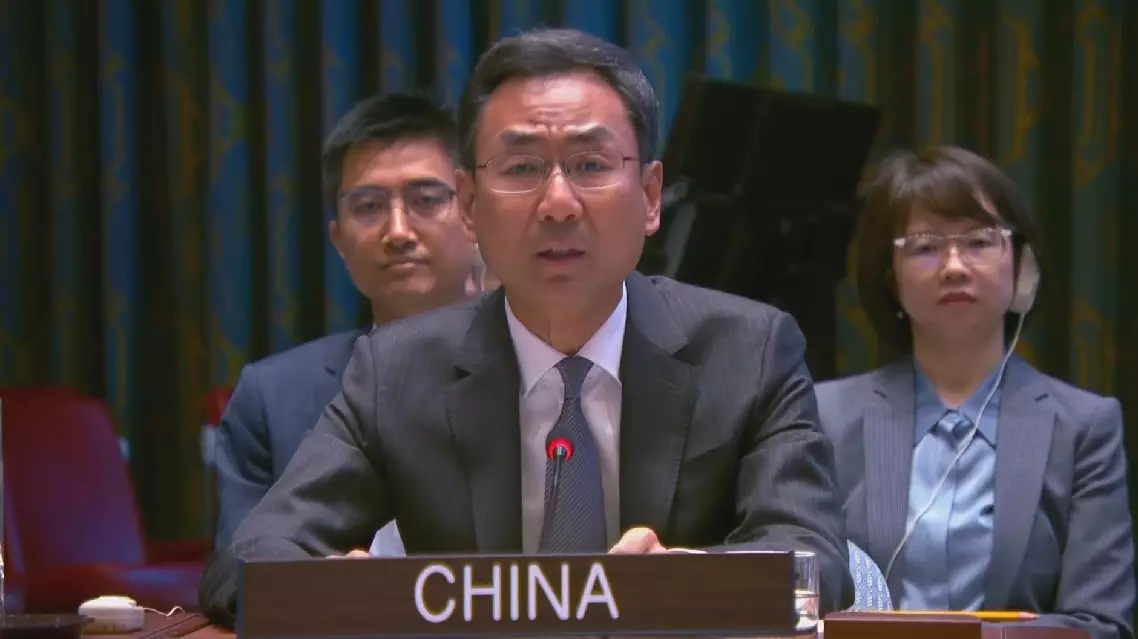
Chinese envoy slams US for negative role in Haiti's crisis



